

| Home | Drivers | Cars | Schedule | Event Photos | Articles | About HGP | Newsletters |
| Roster | Koni Heritage Award | Race Video | HGP on Facebook | Participant Info | Entry Forms | ||
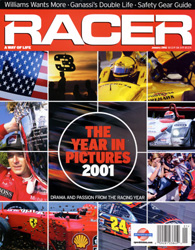

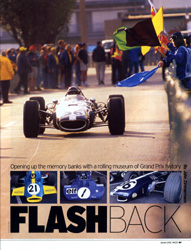
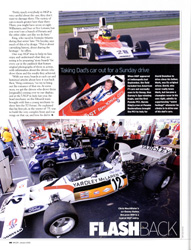

|
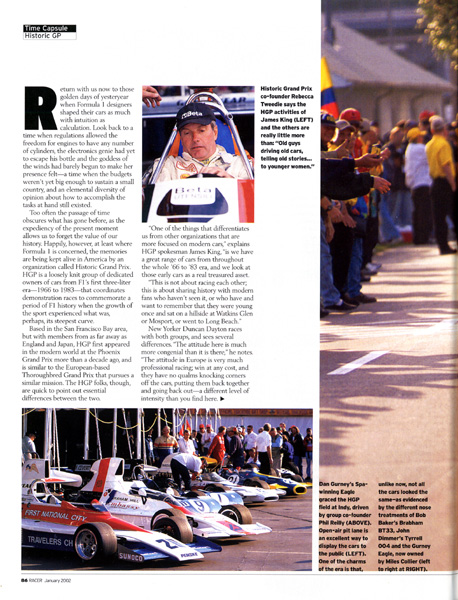
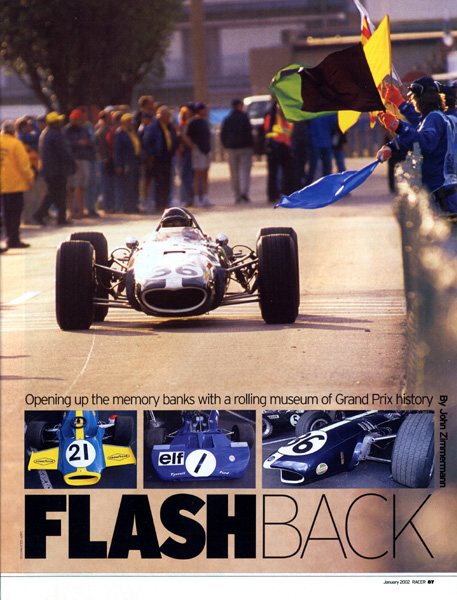
CAPTIONS:
|
|
|
|
"Pretty much everybody in HGP is very careful about
the cars; they don't want to damage them. The variety of cars is much
greater here than there. There, you might have seven or eight Williamses,
and four or five Lotuses, but you won't see a bunch of Ferraris and the
other older cars like we do here."
King, who raced in Formula Atlantic during that series' late-'70s heyday, says much of this is by design. "This is about caretaking history, about sharing the heritage," he offers. One way HGP tries to help its fans enjoy and understand what they are seeing is by preparing "story boards" for every car in the paddock that feature original photographs of them in action, with information about the drivers who drove them and the results they achieved. "With our story boards at each car and historical articles about how it was back then," King continues, "we try to bring out the romance of that era. At some races, we get the drivers who drove them [originally] coming over to our display; and at the USGP in Indy last year, the head mechanic on the Minardi team brought with him a young mechanic to show him the T2 Ferrari. He explained that his first job, in the winter of '75, was to build the very complex front and rear wings on that car, and how he did it. |
|
 CAPTIONS: Steve Romack's ex-Rosberg Williams leads Dan Baker's ex-Lunger McLaren, Duncan Dayton's ex-Andretti Lotus and Jim Busby's ex-Jarier Tyrrell down Laguna Seca's famous Corkscrew (ABOVE). Todd Morici's Ferrari 312 from 1967 is a good example of the older cars HGP hopes to preserve (BELOW). "This is about sharing history with fans who haven't seen it, or who have and want to remember..." James King |
| Home | Drivers | Cars Schedule Event Photos Articles | About HGP | Newsletters | ||
| E-Mail Roster | Koni Heritage Award | Race Video | HGP on Facebook | Participant Info | Entry Forms | |
"Historic Grand Prix" is the registered trademark of Historic Grand Prix, Incorporated